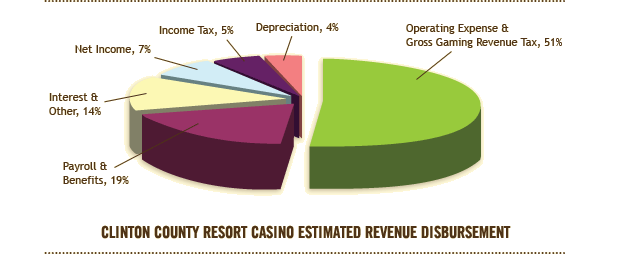The Columbus Dispatch, in an editorial in yesterday’s paper, urges it readers to vote “No,” to approving a proposed constitutional amendment, Issue 6, that would allow a casino to be built on Rt 73, close to I 71.
The Dispatch said, “Proposed casino monopoly would enrich only a few, hurt many Ohioans. The latest casino scheme to find its way onto Ohio’s ballot is at least as bad as those that have been defeated by voters before. Vote no on State Issue 6 to stop the financial ruin, family destruction and unsavory political influence that come with the glitz anytime people succumb to the lure of easy money. And vote no to prevent the spread of this parasitic industry.”
The editorial questions whether much or any tax money would be gained by the state. It says, “Issue 6, a proposed amendment to the Ohio Constitution, would allow one privately owned casino to be built in Clinton County. The issue calls for a tax of ‘up to 30 percent’ on gross casino receipts, but because of an enormous loophole, if other casinos later open in Ohio and are taxed at a lower rate, the first one could reduce its tax rate to the same rate. In fact, the first casino’s tax rate could be reduced to zero.”
The fear is that approval of this casino will open the door to Indian owned casinos opening in Ohio, and since Indian casinos pay zero in taxes, this new Wilminton casino would pay zero taxes as well.
The articles says, “Not coincidentally, the financial backer of Issue 6 is high-stakes poker player Lyle Berman, chief executive of Minneapolis-based Lakes Entertainment, a company that has developed Indian casinos in Michigan, Mississippi, Oklahoma and California. Berman and his Issue 6 partners seek to use the Ohio Constitution to put themselves in control of all future casino gambling in this state.”
Proponents of the casino attempt to answer these charges in an extensive web-site, that includes an elaborately written legal opinion, “Indian Gambling in Ohio: A Non-Issue for Issue Six,” written by Professor Blake A. Watson of The University of Dayton School of Law.
This web-site shows how the $240 million in expected tax revenue will be divided. As the host site, Clinton County will receive 10% or $24 million to be used for additional infrastructure, such as fire and police, required to support the facility. The remaining 88% or $211.2 million in gaming taxes will be equally divided based on population among all 88 counties in Ohio. Montgomery County’s share, according to casino proponents, is expected to be $10,390,26.
The Wilmington News Journal reports, “County Commissioner Mike Curry said he waited before making a decision on the casino issue. After reading the ballot language it became clear to Curry that this was an issue he could not support. ‘After reading the ballot language, there are several sections that I totally disagree with,’ he said.
“Curry said the ballot would do away with zoning in the area of the casino. ‘How can we allow one business to be exempt from this resolution?’ he asked. Also, a license fee of $15 million is not something the casino backers would pay up front but rather it would be an ‘advance on gaming tax revenue,’ Curry said.
“Steve Collett, who owns Pot Luck Greenhouse, is a Chester Township trustee who says the MyOhioNow people (who support Issue 6) are basing figures on Clinton County’s casino doing equal business to the combined efforts of three Indiana casinos — Argosy, Grand Victoria and Belterra. ‘The figures provided by MyOhioNow don’t stand up to scrutiny,’ said Collett. ‘In order to return the tax dollars they project, the casino must do $800,000,000 a year in revenue. That’s $2,250,000 million a day 365 days a year. To put it in perspective, that is 25,000 people a day willing to lose $100.’
The Vote Yes On Issue 6 web-site shows how income to the casino will be divided:






















